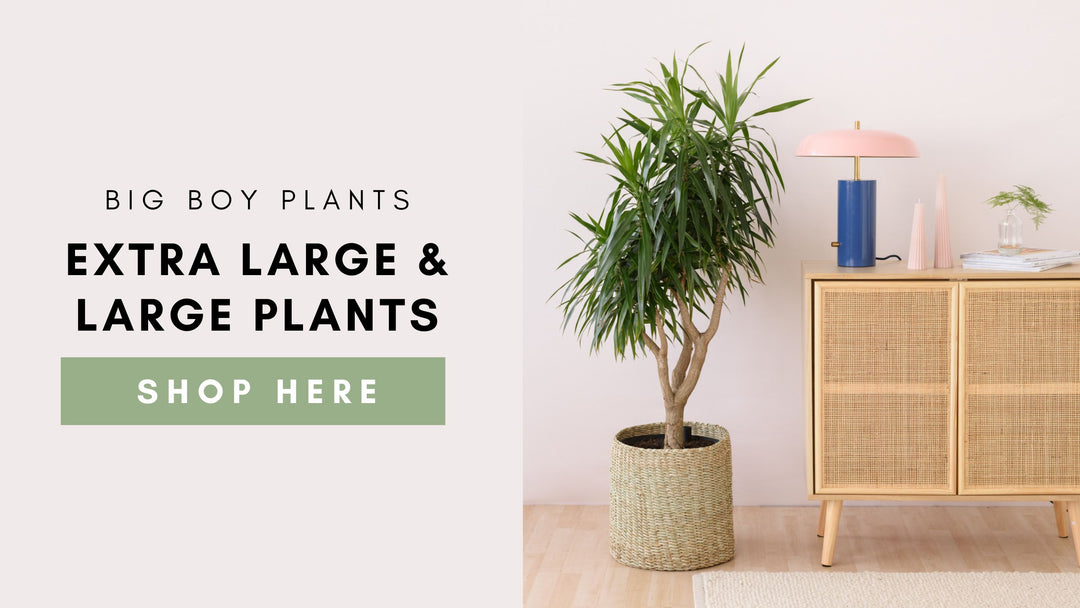Monkey Cups Care Instructions
Monkey Cups
Scientific Names: NepenthesSynonyms: Monkey Cups , Tropical Pitcher Plant, Pitcher Plant
The Asian Pitcher Plant, or Tropical Pitcher Plant or Nepenthes, can be found in its natural habitat in the tropical regions of Asia – mainly Thailand, Malaysia, Philippines, Indonesia, Singapore and New Guinea. The name Monkey Cups comes from monkeys occasionally drinking the fluid found in the pitchers.
The pitcher is actually a swelling of the mid-vein in the leaf. Insects are attracted to these pitchers due to nectar secretions and colouration of the pitcher. Once the insect falls into the pitcher, they are digested by the fluid at the bottom of the trap.
There are two groups of Nepenthes: Lowland and highland. Knowing which group your plant falls into will help you better recreate its natural environment in the home. Lowland species often require warmer temperatures at night, while the highland type prefers cooler. Pay attention to how the plant responds to its environment and make changes accordingly. If the plant produces smaller leaves and grows much slower, then your highland Nepenthes is being exposed to too much warmth at night. If the plant grows slowly and brown spots appear on the leaves then your lowland Nepenthes is not getting enough warmth at night.
The amount of light and sun needed for Nepenthes will vary depending on which type they are. Some, found in upper canopies in the wild, require a lot of sun to maintain their unique pitchers, so should be grown in a location where they can receive at least 4 hours of direct sun each day with very bright filtered sun in the remaining daylight hours. The second type, which is found in lower canopies in the wild, only need bright filtered sunlight throughout the day. Regardless of the species, avoid full shade!
Nepenthes are slow growers during their first few years and can take 5-10 years to mature. Once they are established, they will begin to vine and grow rapidly. At this stage stems will loop around and cling to any available support. Be sure to provide the necessary support during this stage of growth.
Developing pitchers usually create their own fluid so it is generally unnecessary to add water to them. However, exceptions can be made for species with reclining lids or if the contents of the pitcher have been accidentally spilled. Use rainwater when adding to the pitchers.

Common Symptoms
- Brown or yellow leaves: This is just the leaf getting old. Snip them off with a sharp garden shears or pair of scissors. This will keep the plant looking great and remove leaves that the plant no longer needs to support.
- Floppy leaves are due to insufficient lighting. Asses the environment and make changes accordingly.
- Failure to produce pitchers: Increase the humidity and ensure that the plant is receiving sufficient light.
- Pitchers dying/dropping: Severely dehydrated Nepenthes may drop their pitchers suddenly. Ensure that the soil is always kept moist.
- Withered or completely brown pitchers: Depending on the type, individual pitchers may last anywhere from 1-8 months. Pitchers that are deteriorating due to age will usually brown in their top half first and they can remain in this half withered state for several months. They are still beneficial for the plant and should only be trimmed off once they have completely browned.
Care Instructions
- Origin: India and East Asia.
- Height:Trailing stems can grow to 3m, depending on the type.
- Light:Very bright light and direct sunlight is needed for these plants. Keep your Nepenthes in a sunny windowsill or somewhere where it will get a lot of very bright light.
- Water: Keep the soil damp at all times, but avoid letting the plant sit in standing water. Make sure that the water drains through the soil completely.During the warmer months you may need to water the plants on a daily basis, while in winter once every 2-3 days. Keep tabs on the plant and adjust your watering as needed.
- Humidity: Although Monkey Cup plant prefers a high humidity environment it can and will adapt to the humidity of an average household. But, if possible keep it humid!
- Temperature: Most species prefer day time temperatures of 18-27°C, while at night they like to be a little cooler at 7-18°C. However some lowland Nepenthes prefer night temperatures above 21°C.
- Soil: Use a well-draining, low in nutrients, high aeriation soil mix. A popular mix is 1 part dried sphagnum moss and 1 part perlite (or pumice). You can also use 1 part peat moss, 1 part perlite and 1 part silica sand.
- Feeding: There is no need to feed your Nepenthes at all as it has adapted to survive on a minuscule amount of nutrients gained from the few insects it digests each month. If you do decide to feed it, use recently killed insects that will fit comfortably in the pitchers. Avoid putting too many inside as it will cause the pitchers to rot. Don’t feed it during winter. You may prefer to spray your plant with a weak solution of fertilizer. Use a high quality orchid or bromeliad fertilizer. Use ¼ - ½ teaspoon of fertilizer to 3.5 litres of water. Mist your plant with this mixture weekly during spring and summer but only once a month or not at all in winter. With both fertilizing and feeding, remember that none is better than too much!
- Repotting: For the robust Nepenthes you can repot it every couple of years. Change the soil, and if needed, use a larger pot. Repotting can be done anytime during the year.
- Pruning: Since most Nepenthes are actually vines, pruning the green stems back will encourage side shoots and result in a fuller plant.
- Propagation: Cuttings - Cuttings can be taken from the plant anytime of the year, however cuttings taken when the parent plant is actively growing seem to have a greater success rate. The best cut is one with an active growing tip of the stem and about 2 to 3 leaves on it, however, it is not essential to have a growing tip. Cut off the lowest leaf from the cutting and plant the stem vertically in damp Sphagnum moss. The lower node (the point where the leaf was growing before you removed it) should be underneath the potting mixture level. Place the pot for rooting in a plastic bag or propagating case in conditions of high humidity and moderate light. The cuttings will start root in one to two months and begin to form new pitchers in about six months. When new growth is visible it is a sign that rooting has occurred. Once the plants have rooted and started to grow, pot them up in a one size bigger container using standard potting mixture and put them in a terrarium (or partially opened plastic bag) to adapt the new plant to the lower humidity conditions.
If in stock, shop for Monkey Cups here.



